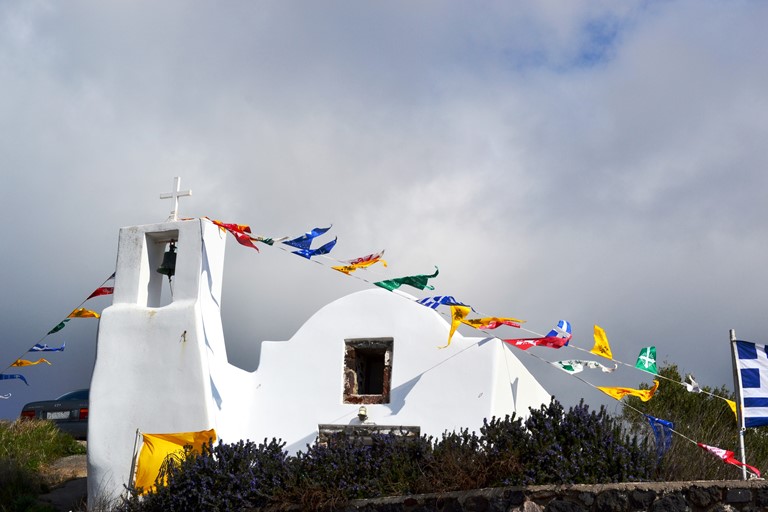Fava bean purée and fried tomato balls are two of Santorini’s most typical dishes. Not only do they deliciously contain the essence of its volcanic soil, they are also an example of its authentic lifestyle. These two cucina povera flavors may have found their way into modern gourmet menus, but they also remind us of times when locals had to make smart use of the scarce resources they had available.
Tomatokeftedes, fried tomato balls, are made with Santorini’s special variety of cherry tomatoes. These red balls are a piece of work of the island’s volcanic soil: firm on the outside, sweet and juicy on the inside. They only need morning moisture to grow and, according to some, scarce irrigation and volcanic minerals is what accounts for the richness of their flavor. Tomatokeftedes is what unites but also what sets Santorini apart from neighboring Aegean islands -each one boasting its own version of fried vegetable balls made of zucchini, potato, or whatever ingredient is abundant on each island.
Fava beans in Santorini are as ancient… as the island itself. Archaelogists have found traces of this legume in the ancient settlement of Akrotiri, dating back to 1.500BC. Fava’s sweet flavor and velvety texture is best enjoyed in the form of a purée, often paired with onions, tomato or capers. Avant-garde chefs have experimented with fava beans to create crepes, tartes and even ice-creams. The bean itself continues to bear strong ties to the past. According to centuries-old traditions, it is planted on December 21, on one of Virgin Mary’s feast days. If you happen to visit Santorini in April, when fava plants are in bloom, look for their bright pink flowers in the fields.
To discover more about the importance of Santorini’s cherry tomatoes and the tomato-processing factories that were built on the island in the early 20th century, visit the Tomato Industrial Museum at Vlychada beach (www.santoriniartsfactory.gr/en, tel. 22860 85141,email. info@tomatomuseum.gr).


Almost everybody knows that Santorini’s unusual beauty is the result of a volcanic eruption but, once you are on the island, it is hard to tell where that volcano actually is. Santorini as we know it today, is the result of four volcanic eruptions the last of which occurred in 1620 BC. This final...
Read More

Saint Matrona’s festival takes place on October 20 in Finikia and is one of Santorini’s most popular panigiria, as these open air celebrations are called in Greece. Saint Matrona’s church is decorated with palm leaves on the eve of the celebration and the religious icon that depicts the saint is...
Read More

Santorini’s seabottom is a combination of “crystal clear waters and dramatically impressive underwater landscapes”, as Pierre Yves Cousteau put it. It was forty years ago that his father, oceanographer Jacques Cousteau, explored the depths of Santorini in search of the lost city of Atlantis. The...
Read More





